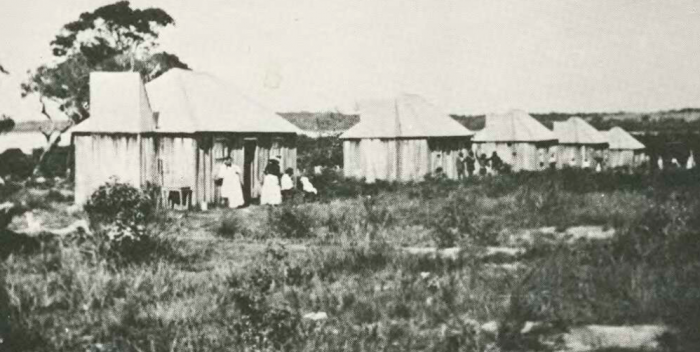South Coast NSW History Story
CROOKHAVEN/ORIENT POINT
In 1872 local businessmen erected a brass lantern on a pole at the entrance to the Crookhaven River as an aid to shipping. The river had become a port of call for large steamers so an associated pilot’s station was also established.
In the years that followed a small jetty was constructed at Crookhaven Heads. It was primarily intended to receive cargoes destined to the pilot station and to the nearby Roseby Park Aboriginal settlement because a larger government wharf had been constructed at nearby Greenwell Point.
In 1891, 233 acres of land adjacent to the Crookhaven headland were set aside as a recreation reserve. Like so many other places in the area, Crookhaven became a popular camping location. At some point, a Crookhaven Guest House was opened to further cater to visitors to the area. It was destroyed by fire in 1963.
In the 1910s Henry Halloran, a land speculator, real estate agent and surveyor, acquired most of the land at Orient Point from east of Roseby Park to the Crookhaven Park Reserve. This was intended to become the first suburb in a major development called St Vincent City and sales of Orient Point land occurred in the 1920s. Culburra was to become the second suburb developed. Culburra’s unusual semi-circular layout of roads remains the most visible legacy in the area of Halloran’s St Vincent City.
Predating all of this, in 1836 David Berry acquired 155 acres of land at Orient Point (then known as Crookhaven) and in the 1840s he moved a number of his Aboriginal and Maori workers there from his Coolangatta Estate. (Maoris had been brought from New Zealand to work on the Coolangatta Estate. Inter-marriage between them and the Aboriginals created an unusual mix, somewhat akin to what happened on Pitcairn Island when mutineers from the Bounty formed relationships with Tahitian women.)
In 1900, 27-acres of land were taken from the Crookhaven Park Reserve and became the Roseby Park Aboriginal Reserve. By 1903 there were 100 people living on the reserve, including 42 children, so the Roseby Park Aboriginal School was opened.
‘The New South Wales Aborigines' Advocate : a monthly record of missionary work amongst the Aborigines’ included these details about Roseby Park in 1904: ‘There are two distinct settlements of people at Greenwell Point, known as the Old Reserve and Roseby Park, about half a mile of bush track distant from each other. There are 25 residents on the Old Reserve and 55 at Roseby Park. Another 20 or more reside at Coolangatta, six miles away, and are continually travelling backward
and forward. Again, at Jervis Bay there are nearly a score who will be under the influence of the Missionary. Altogether the lives of about 120 persons will be reached by the sound of the gospel…(David Hay of Coolangatta Estate) shared the expense with the government of erecting 10 new houses which form a nice little village…The Government Board provided a building to be used as a school, and the Department also sent a teacher, under whom the children have made marked progress.’
Orient Point also once had a significant shipbuilding industry. When World War II started, a shipbuilder by the name of Dave Evans was building two 65-foot trawlers in Orient Point and was awaiting delivery of their engines. In 1942 he was directed to hand them to the US Army Small Ships division that towed both vessels to Sydney where they were fitted with engines. They were then used in and around New Guinea. The boats were never returned and Dave received no compensation! In the 1950s a gale destroyed his wharf on the Crookhaven River.
Image: Aboriginal houses at Roseby Park. nla.obj-137939659
